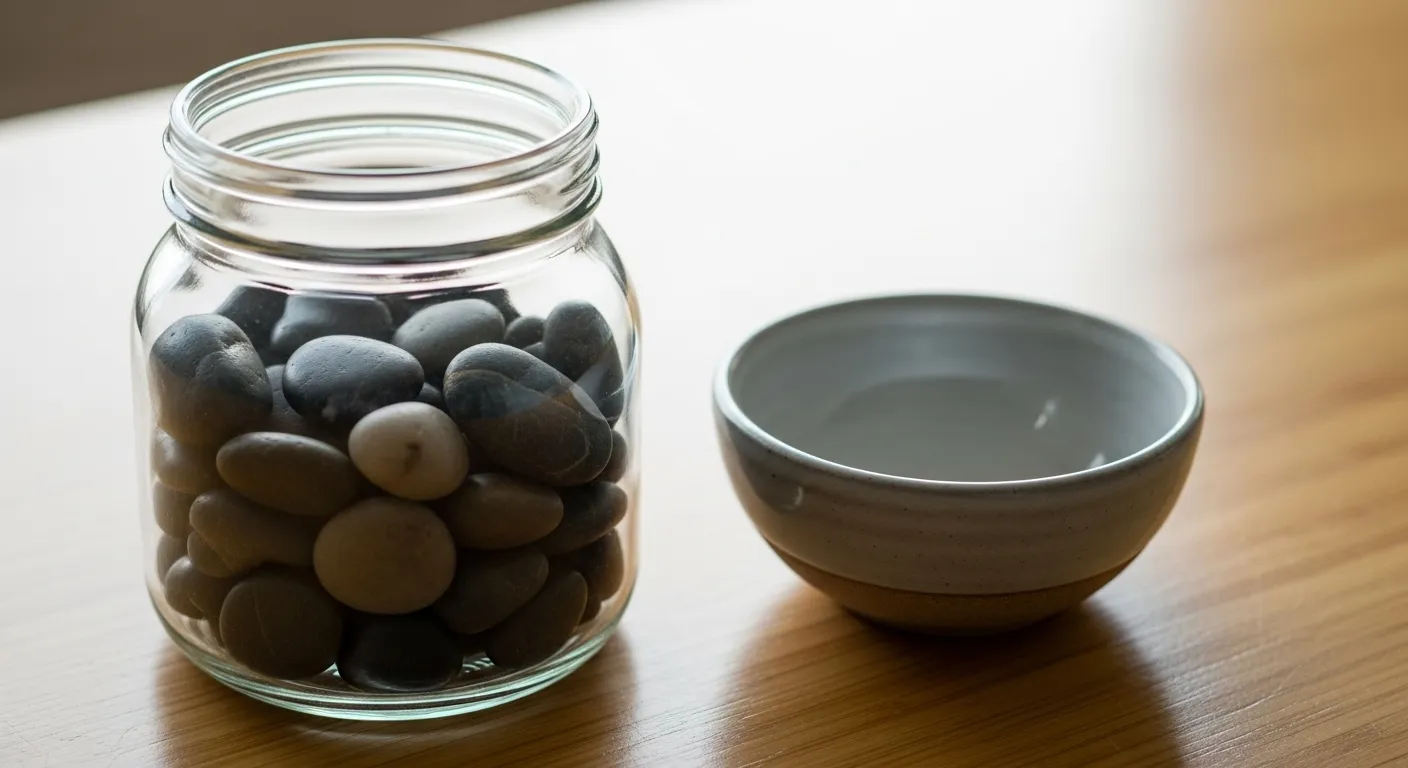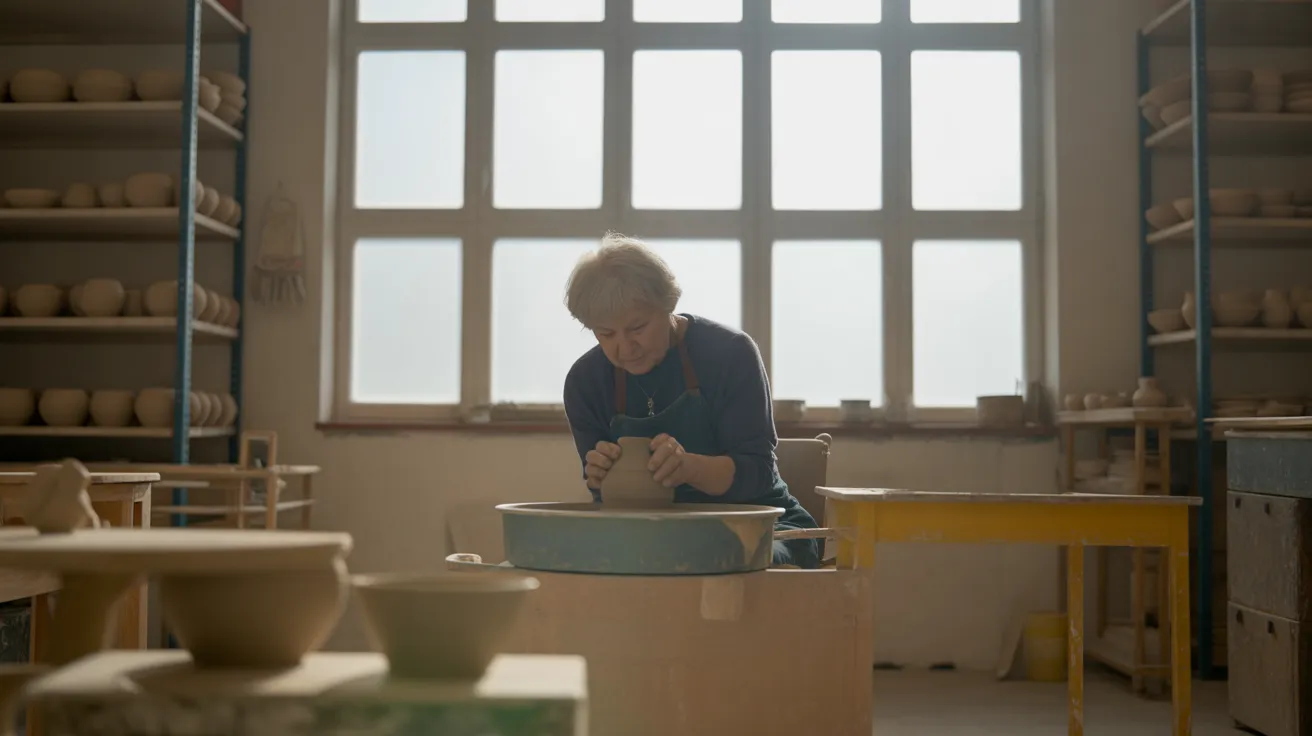
In the relentless pace of modern life, especially in our busy urban centers, the dream of self-improvement often feels like a battle waged with a finite resource: willpower. We start with bold declarations. This year, I will meditate every morning. I will write 500 words of my novel daily. I will finally learn to code. For a few days, or maybe even a week, our determination burns bright. We push through resistance, fueled by motivation and sheer force of will.
But willpower, as you have likely discovered, is a fickle ally. It’s like a muscle that fatigues. After a long day of navigating crowded commutes, making countless decisions at work, and resisting the siren call of a thousand digital distractions, our willpower is often exhausted. The grand ambition we set in the calm of the morning now feels like an insurmountable mountain. So, we skip a day. Then another. Soon, the resolution is a distant memory, another ghost in the graveyard of good intentions.
If this cycle feels painfully familiar, you are not alone. It’s not a sign of weakness or a lack of discipline; it’s a sign that you are relying on the wrong tool. Willpower is for sprints, not for the marathon of lasting change. For that, we need something quieter, gentler, and far more powerful: consistency. This is where a brilliantly simple productivity hack, often called the “Seinfeld Method,” comes into play.
This guide is not about gritting your teeth or “hustling” harder. It’s about building a system that makes showing up easy, even on your worst days. It’s about leveraging the quiet power of tiny, consistent steps to create momentum that becomes unstoppable. We will explore how to use this framework not just to check a box, but to fundamentally reshape your habits, your environment, and even your sense of self. Forget the grand, exhausting gestures. The path to durable change is paved with small, daily victories.
📚 Table of Contents
The Simple Genius of “Don’t Break the Chain”
The legend of the Seinfeld Method is a classic in productivity lore. As the story goes, a young comedian named Brad Isaac once asked Jerry Seinfeld for advice on becoming a better comic. Seinfeld’s counsel was not about joke structure or stage presence. It was about consistency. He told Isaac to get a big wall calendar and, for every day that he did the work of writing jokes, to put a big red “X” over that day. “After a few days, you’ll have a chain,” Seinfeld supposedly said. “Just keep at it and the chain will grow longer every day. You’ll like seeing that chain, especially when you get a few weeks under your belt. Your only job next is to not break the chain.”
That’s it. That is the entire Seinfeld Method. It is not complex. It has no app, no guru, no expensive course. Its power lies in its profound simplicity and its focus on the one thing that truly matters for skill acquisition and habit formation: the act of showing up.
To understand why this works so well, we need to look under the hood at the mechanics of our own minds. Our brains are efficiency machines, always looking for shortcuts. Habits are those shortcuts. They are behaviors that we have performed so many times that they become automatic, moving from the conscious, effortful part of our brain to the automatic, subconscious part. The Seinfeld Method is a master tool for programming these automatic behaviors. It works by harnessing a fundamental psychological pattern known as the habit loop.
In its plainest terms, the habit loop consists of three parts. First, there’s the cue, the trigger that tells your brain to initiate a behavior. This could be a time of day, a location, an emotional state, or the action that came just before. Second is the action (or routine), which is the behavior itself. This is the thing you want to do, like writing jokes, meditating, or tidying your desk. Finally, there’s the reward, the satisfying feeling that tells your brain, “Hey, this was good. Let’s remember to do it again.” The Seinfeld Method masterfully creates its own reward. The action is marking the “X.” The reward is the visual satisfaction of seeing the chain grow longer—a tangible representation of your progress and commitment. This simple visual feedback reinforces the action, making you more likely to repeat it tomorrow.
However, marking an “X” on a calendar can feel disconnected from a larger purpose. To make a habit truly stick, especially when motivation wanes, it’s powerful to connect it to your identity. This is the core of identity-based habits. Instead of focusing on what you want to achieve (e.g., “I want to write a book”), you focus on who you want to become (e.g., “I am a writer”). The goal isn’t to meditate for 30 days; the goal is to become the type of person who meditates. Each time you perform your tiny action and mark your “X,” you are casting a vote for that new identity. You aren’t just doing something; you are reinforcing who you are. A single workout won’t transform your body, but it reinforces your identity as “a person who doesn’t miss workouts.” Marking that “X” isn’t just about the chain; it’s a daily affirmation: “Yes, today I was a writer. Today I was a musician. Today I was a person who takes care of their health.”

Designing Your Unbreakable Chain: From Idea to Action
Understanding the theory is one thing; putting it into practice is another. The beauty of the Seinfeld Method is that you can design a system perfectly tailored to your goals and your life. This design process isn’t about finding more time or summoning more motivation. It’s about being strategic, realistic, and kind to your future self. The goal is to make the desired action the path of least resistance.
The first and most critical step is to define your action. Here, the temptation is to be ambitious. If your goal is to read more, you might decide to read one chapter every night. This is a recipe for failure. Instead, you must choose a minimum viable action. This is a version of your desired habit that is so laughably small, so incredibly easy, that you simply cannot say no. It’s a task that takes less than two minutes to complete. Why? Because the goal, especially at the beginning, is not to make progress. The goal is to build the habit of showing up.
Instead of “read a chapter,” your minimum viable action is “read one page.” Instead of “meditate for 20 minutes,” it’s “sit and breathe deeply three times.” Instead of “write 500 words,” it’s “write one sentence.” This seems absurdly small, but it is psychologically profound. On a day when you are tired, stressed, and have zero motivation, you can still read one page. You can still write one sentence. And by doing so, you get to mark your “X.” You keep the chain intact. You cast a vote for your new identity. And more often than not, once you start, you’ll find you want to do a little more. The hardest part of any task is getting started; a minimum viable action makes starting nearly effortless.
Next, you must perform a friction audit. Friction is any force that makes a behavior harder to do. It’s the number of clicks to open an app, the distance to the gym, or the effort required to take your guitar out of its case. Our brains are inherently lazy and will avoid friction whenever possible. To build a good habit, your job is to systematically eliminate every point of friction between you and your minimum viable action. If you want to floss, don’t keep the floss in a drawer; put it directly on top of your toothpaste. If you want to journal, leave your journal and a pen open on your pillow in the morning. If you want to practice guitar, take it out of the case and put it on a stand in the middle of your living room. Each step you remove makes the action more likely to happen automatically.
The flip side is also true: for habits you want to break, you should intentionally add friction. If you want to watch less TV, unplug it after each use and put the remote in another room. The extra effort required will give your conscious brain a moment to ask, “Do I really want to do this?”
This leads directly to the power of environment cues. Your environment is one of the most powerful and invisible forces shaping your behavior. You can use this to your advantage by designing your space to prompt the actions you want to take. The guitar on the stand isn’t just low-friction; it’s a visual cue. Every time you walk past it, it whispers, “Play me.” The open journal on your pillow is a cue for your morning writing habit. The single most important cue in the Seinfeld Method, of course, is the calendar itself. Place it somewhere you cannot avoid seeing it every single day: on your bathroom mirror, next to your coffee machine, on the wall behind your computer monitor. The sight of that growing chain of red X’s becomes a powerful cue to perform your action for the day.
Finally, the method has built-in accountability. While you can certainly share your progress with a friend, the primary accountability partner is the calendar itself. That unbroken chain creates a psychological desire for completion. The empty box for today calls out to be filled. This visual proof of your commitment becomes a powerful motivator, a testament to the work you’ve done and a promise to your future self that you will continue.
![]()
Safeguards for a Human System: When Life Intervenes
No system, no matter how well-designed, is perfect, because the people using it are not perfect. Life is messy. You will get sick. You will have emergencies. You will travel. You will have days where, despite your best efforts and a laughably small minimum viable action, you miss a day. The most important part of building a durable habit is not being perfect; it’s having a plan for when you are imperfect.
The first and most destructive reaction to a missed day is shame. We see that broken chain and think, “I’ve failed. I’m no good at this. I might as well give up.” This all-or-nothing thinking is the enemy of long-term progress. Your goal should be to practice resetting without shame. A missed day is not a moral failure; it is simply data. It’s an opportunity to learn. Why did you miss it? Was your minimum viable action still too large? Was there a point of friction you didn’t account for? Was it an unavoidable external event? Observe the reason without judgment, and then, with self-compassion, simply begin again the next day. The success of the Seinfeld Method is not measured by the length of a single chain, but by how quickly you start a new one.
To combat the spiral of shame, adopt the simple rule: never miss twice. One missed day is an accident. Two missed days is the beginning of a new, undesirable habit. This rule provides a clear, immediate action plan after a setback. It reframes the situation from “I broke my streak and failed” to “My only job today is to get back on track.” This single guideline can be the difference between a minor blip and a complete abandonment of your goal. It acknowledges human fallibility while demanding a swift, gentle course correction.
We must also be mindful of streak psychology. A long, unbroken chain is an incredible motivator. It provides a sense of accomplishment and momentum that can carry you through days of low energy. However, it can also become a source of anxiety. The longer the streak, the more pressure you might feel not to break it. This can lead to people performing their habit out of fear rather than genuine intention, or feeling completely demoralized when an inevitable break occurs. It’s helpful to view the streak as a tool, not a trap. It’s a game to keep you engaged. If a long streak helps you, great. But if you find yourself overly stressed about it, reframe your goal. Perhaps you can aim for a certain number of X’s per month, allowing for a few “off” days without feeling like a failure. The ultimate goal is consistency over the long term, not a single, flawless performance.
For planned disruptions like vacations or very busy periods at work, you can pre-emptively adjust your system. You might define an even smaller “travel-day” version of your habit. If your daily habit is to read one page, perhaps your travel version is to read one paragraph. This allows you to keep the chain going and maintain the identity, even when your circumstances are unusual. The key is to be proactive and flexible, treating your habit system not as a rigid prison but as a living, adaptable guide that serves you.
![]()
Putting It All Together: Two Worked Examples
Let’s move from the abstract to the concrete. Seeing how these principles can be woven into a daily routine makes them far more tangible. Here are two examples of how someone might apply the Seinfeld Method to build a powerful, yet gentle, habit chain. Notice how the focus is on tiny actions, environmental design, and identity reinforcement.

Example One: The Evening Wind-Down Routine
Sarah works in a fast-paced city job and finds it nearly impossible to switch off at night. Her mind races, she scrolls endlessly on her phone, and she often goes to bed feeling wired and anxious. Her goal is to create a calming evening ritual. She decides her identity focus is: “I am a person who rests and recharges peacefully.” She gets a simple monthly calendar and places it on her bedside table next to a red marker. Her minimum viable action is not a full-blown, 30-minute routine. It’s simply to put her phone on its charger across the room and pick up a book. That’s it. The action takes 30 seconds. She has audited the friction; the book is already on her nightstand, and the charger’s new location adds friction to the bad habit of nighttime scrolling. The calendar itself is the cue. After she completes the tiny action, she makes a satisfying “X” on the day. Most nights, once she has the book in her hand, she reads for 15 or 20 minutes. But on nights when she is utterly exhausted, she reads just one paragraph, puts the book down, and still gets to mark her “X.” She is reinforcing her identity, keeping the chain alive, and slowly, gently, building a habit of evening calm.

Example Two: The Morning Focus Primer
David is a freelance designer who struggles with the unstructured nature of his mornings. He often drifts into email or social media, losing the first, most productive hour of his day. He wants to start his workday with clarity and intention. His identity focus: “I am a focused professional who owns my mornings.” He buys a large wall calendar and hangs it directly in his line of sight from his desk. He decides to use a technique called habit stacking, where you link a new habit to an existing one. His existing habit is making a cup of coffee. His new routine is this: while his coffee brews, he will not look at his phone. Instead, he will open a specific notebook and write down his single most important task for the day. This is his minimum viable action: write one sentence about his top priority. To reduce friction, he prepares the night before by leaving the notebook and a pen open to a fresh page right next to his coffee maker. The act of turning on the machine is the cue. After he writes his sentence, and while the coffee finishes brewing, he walks to the wall calendar and draws his “X.” He has successfully protected his focus for the first ten minutes of the day. This small act of intention sets the tone, making him far more likely to tackle that important task first, all because he started with an action so small it was impossible to skip.

Frequently Asked Questions About the Seinfeld Method
As you begin to implement this simple system, questions will naturally arise. Here are answers to some of the most common queries we see, designed to give you clarity and confidence as you build your own chains of consistency.
1. How long does it actually take to form a habit?
You may have heard the popular myth that it takes 21 days to form a habit. However, research has shown this to be a significant oversimplification. A well-known study published in the European Journal of Social Psychology found that the average time it took for a new habit to feel automatic was 66 days, with a wide range from 18 to 254 days. The time depends heavily on the complexity of the habit, the individual, and the environment. The takeaway here is not to fixate on a magic number. Instead, focus on the process. The purpose of the Seinfeld Method is not to reach a finish line where the habit is “formed,” but to build a perpetual system of showing up. The consistency itself is the goal.
2. What should I do about sick days, travel, or holidays?
This is where the “all-or-nothing” mindset can be a real trap. The best approach is to plan for imperfection. For planned events like travel, you can create a “travel-mode” version of your habit that is even smaller and more portable, as discussed earlier. For unexpected disruptions like a sick day, the kindest and most effective approach is to give yourself grace. You can simply leave the box blank for that day and resume your chain the very next day, following the “never miss twice” rule. Some people like to make a different mark on the calendar for these days—like a circle or a dot—to signify a planned or unavoidable break, which can feel less disruptive than an empty square.
3. I’ve been consistent for weeks, but I feel like I’ve hit a plateau. What now?
Plateaus are a normal and expected part of any long-term journey of improvement. The initial excitement fades, and the work can start to feel routine or even boring. This is where your identity-based habit focus is so crucial. You are not doing this for a rush of motivation; you are doing it because this is who you are. During a plateau, it’s more important than ever to stick to your minimum viable action. Just keep showing up and marking the “X.” You can also introduce small variations to keep things fresh. If your habit is to practice piano scales, maybe you spend one day a week learning a tiny piece of a fun song instead. If your habit is to jog, maybe you explore a new route. The key is to maintain the core consistency while introducing just enough novelty to stay engaged.
4. Can I use this method for multiple goals at the same time?
While it’s technically possible to have multiple calendars for multiple habits, it is highly recommended that you start with just one. Building a new habit, even a tiny one, requires focus and mental energy. Attempting to change too many things at once is one of the most common reasons for failure. It divides your attention and depletes your willpower. Choose the single most important habit that will have the biggest positive impact on your life right now. Commit to it fully. Once that first chain is well-established and the behavior feels almost automatic, then, and only then, should you consider adding a second one. Master one stream of consistency before you try to branch out.

Your First Chain: Your Next 30 Days
You now have the philosophy, the strategy, and the safeguards to build a system of consistency that can truly last. The Seinfeld Method isn’t just another one of the many productivity hacks you read about online; it’s a fundamental shift from relying on motivation to relying on a system. It’s a gentle, humane approach to self-improvement that respects your limits and celebrates small, daily acts of commitment.
The journey from who you are today to who you want to become is not a single, heroic leap. It is a long walk made of thousands of tiny steps. The “X” on the calendar is a record of each step taken. It is a visual testament to your promise to yourself. Over time, that chain becomes more than a record of what you’ve done; it becomes a powerful source of confidence in what you can do next.
Reading about this is not enough. The power is in the doing. Here are your next actions to turn this knowledge into a real, tangible chain of progress in your life.
1. Within the next 24 hours: Choose your one thing. Don’t overthink it. What is one small area of your life you’d like to improve? Think about a keystone habit that could create a positive ripple effect. Settle on the one habit you will focus on for the next month.
2. In that same sitting: Define your minimum viable action. Take your chosen habit and shrink it. Then shrink it again. Make it so easy it feels almost silly. “Read for an hour” becomes “read one paragraph.” “Go to the gym” becomes “put on your workout clothes.” Write this laughably small action down.
3. Before you go to bed tonight: Set up your space. Get a physical calendar—paper is more tangible and powerful than a digital app for this. Decide where it will live, a place you will see it without fail every day. Place a pen or marker right next to it. Then, remove at least one point of friction between you and your new habit. Put the book on your pillow, lay out your yoga mat, or place your journal next to your toothbrush.
4. Tomorrow: Start your chain. Your only goal for tomorrow is to perform your minimum viable action and draw your first “X.” That’s it. Savor the feeling. You are not just checking a box. You are casting a vote for your future self. You are beginning.
Your job is simple: show up, do your tiny action, and don’t break the chain. But if you do, be kind to yourself, and remember the most important rule of all: never miss twice.
Disclaimer: The information provided in this article is for educational and informational purposes only and is not intended as a substitute for professional medical or psychological advice, diagnosis, or treatment. Always seek the advice of your physician or other qualified health provider with any questions you may have regarding a medical or mental health condition. For more information on psychological health, you can visit the websites of organizations such as the American Psychological Association at apa.org or the National Institutes of Health at nih.gov.






